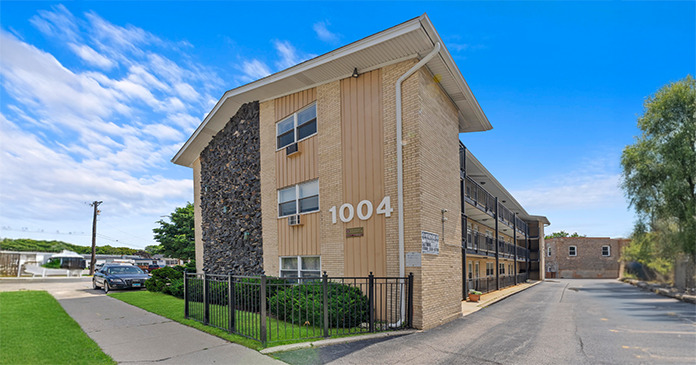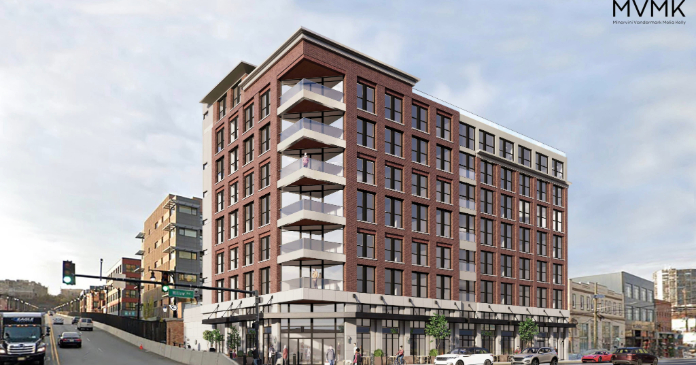HUD has always been important to the multifamily industry. The question with this HUD secretary is, is multifamily important to HUD?
Amidst the buzz of home-ownership landmarks and mandates, the President’s proposed budget cuts targeted at HUD and reassignment of a number of HUD programs to other agencies with less funding, it’s hard not to feel dismissed as an industry. (Note: The president’s mandate to create seven million affordable homes cited in the last issue was “for sale” units, not rental units as published.)
While home-ownership will always be the dream of many, multifamily remains home-sweet-home to 82 million. American households; 1 in 4 of these units is struggling at or below 30% of the median income (poverty level). The gap between struggling rental households and affordable rental stock continues to widen.
Secretary Jackson is a critical player in the future of MF and it’s ability to meet market demand. AP continues its segment with Secretary Jackson and his plan for the MF industry.
AP: There’s an undercurrent in MF that your office is out of touch, even dismissive of this industry. What is your response to this and what are your plans to change it?
Sec. Jackson: The idea that the department is all about home-ownership and dismissive of MF is totally unfounded. Let’s put it into perspective. First, the raw statistics: The department devotes 1,865 staff, roughly 20 percent of its entire staff, to traditional MF housing, not including housing that is involved in Public and Indian Housing. Our budget for MF housing is about a third of the department’s budget. We asset manage over 30,000 projects with almost 3 million families from the far Western Pacific, the Marianas, to Hawaii, to Alaska, to the Virgin Islands, Puerto Rico, and the 48 contiguous states.
During the first four years of this Administration, we have increased our mortgage loan insurance business almost two-fold. We have grown from around $4 billion in activity with approximately 600 projects to $8 billion in activity and 1,500 projects. We have broken volume records every single year of this Administration.
Certainly, there is a great deal of press and emphasis by the Administration on home-ownership because there is a strong, strong belief that when you own something, you will take greater pride in it, you will build wealth, you will be less transitory, your children will go to better schools, and so forth. What I am saying is not in contravention to that emphasis on ownership. When 70 percent of the population are homeowners, that means 30 percent or 60 million are renters. It is this significant population that we serve in MF programs.
Consider the elderly and disabled. Within my two years here, we have devoted tremendous resources to nearly 4,000 projects for elderly and disabled persons which we originated under the 202/811.. programs. We have devoted tremendous resources to designing a means for these properties to be recapitalized. We have written a new regulation that generates a completely, heretofore, unthought of paradigm with respect to this segment of housing.
In the past, elderly and disabled housing was solely a transaction between a non-profit sponsor and the federal government. We now have a rule on the street called the “Mixed Finance” rule. We expect it to be published in final form within the next 30 days. It will provide cross-cutting, if you will, between programs for this very fragile, but very needy, segment of our population. It brings together the non-profit sponsors and government which provide capital to fund the development of these properties, with the community that develops low-income housing tax credit projects, with the mortgage banking community that provides financing. This will vastly increase the capital available to renew this vital housing stock, all of it MF.
Let’s discuss perception. I would like to discuss two perspectives.
First, the budget perspective. The 202/811 program has not scored well in the OMB’s (Office of Management and Budget) Performance Assessment Rating Tool (PART),. and therefore it has not garnered increases in budget authority. In fact, the 2006 budget actually calls for decreases in 811. This is a product of the overall need to reduce the deficit and resultant pressure on the domestic economy. This is not an act of dismissing the need for MF housing. We will see cuts in our programs throughout. We fight every day to maintain our resources, to be more effective with the resources that we have, and to provide safe, decent, and sanitary housing, whether it be rental or for sale housing in this country. In no way should anyone interpret that action as being dismissive of the industry.
The second aspect whereby nonprofit developers of 202s and 811s may feel we have been less supportive recently than in the past is related to their transition to a new paradigm of doing business. They are now in business with the mortgage banker, the tax credit industry and, in effect, being exposed to the for-profit sector. They are being asked to do things they have never been asked to do before.
In the past, not-for-profits have had 100 percent loans. They are refinancing with a 223f. It’s a 90 percent loan. It requires real equity. They are required to pay upfront costs for the development of a loan proposal — moneys for appraisals, surveys, title binders and such. They have never had to do that before.
The entities that own these properties are single purpose entities and, by statute, do not have Surplus Cash for these fees. So I can see how there would be a sense of frustration, and maybe a feeling that somehow we are being less supportive. We are in a transition period. And that transition is accompanied by the normal transition pains and frustrations that we would have anytime we go through a paradigm shift. Ultimately this change will be good. I personally believe that it will lead to significant opportunities for nonprofit sponsors and, more importantly for the people that they serve, the elderly and disabled families and individuals.
How do we change the perception that we are not working each day to support MF? First, we will continue our efforts to strengthen and provide liquidity to the MF capital markets by introducing new mortgage programs and fine tuning those we have. We will discuss these issues with media such as Apartment Professional magazine. I spend a great deal of time on the road speaking to industry groups and making these same points. And I will continue to do so. I think it is an important part of what we do here at the department.
AP: What do you see as your biggest contribution to MF in the first four years?
Sec. Jackson: Our contributions include what we have done with respect to the low income elderly and disabled, what we have done in terms of increasing capital for new apartment construction and financing by increasing by a factor of two our MF insurance portfolio. We now have 56 billion dollars of insurance in force on MF mortgages across the country. But let me talk about our biggest contribution. I think it occurred, or was well underway, long before I arrived on the scene, and that is the imposition of improved risk management techniques.
Historically the department, when dealing with properties that failed, has taken the real estate into inventory. The department is not in the property management business. We are not property operators. That is not our function. Our recovery rates, when we had claims, were very low. This problem was recognized early on in this Administration. We began an effort to get out of the business of managing the real estate we owned. Four years ago, we had 150 properties that the department owned and operated throughout this country. Many of them had been in inventory for a long time. Today, I am proud to say, from the 150 properties four years ago, we have one property owned. That is a tremendous record.
In addition to a focused effort to divest ourselves of the real estate, we embarked on a program of avoiding a revolving door where we got rid of 149 and gained 160. To do that, we established a policy where, when a loan is assigned to the department we, as the insurer of the mortgage, will pay a claim to the mortgagee in the amount of the unpaid principal balance of the mortgage, less a transaction fee and plus certain accrued interest. We pay that claim and we now own that mortgage note. In the past, as standard operating procedure, we would move straight to foreclosure. Now we assemble the loans that are assigned to us into pools of mortgage notes. We sell these notes on Wall Street in what we call the multifamily note sale. We do this typically twice a year. The pools can be anywhere from $200 to 350 million each. In this manner, the department has increased its recovery rate from the low levels I mentioned earlier to almost 70 percent.
The basic principle of doing better at that which we do — that is, we are in the mortgage insurance business, we are in the capital markets business, we are not in the property management business, we are not in the property ownership business — has brought us in four years to a situation where our recovery rates have increased almost two-fold.
What does that mean for the apartment industry? That means we are able to increase the impact we can have on MF finance nationwide because we are no longer dependent on subsidies from the federal government to operate our insurance fund. Congress, after the Credit Reform Act of 1991, provided that these funds must be authorized in the Budget. So we literally had to go to Congress and ask for $200 million per year to fund our projected shortfall. Today, our needs are less than $15 million a year for the programs we have directed at the very low income, which are very high risk.
Not only are we no longer asking Congress for $200 million per year, we have also reduced the cost to the development of the property by reducing the premium we charge for the mortgage insurance, from 80 basis points down — in most instances — to 45 basis points — almost a 50 percent decline.
AP: What initiatives can be taken to address some of the industry’s concerns, such as removing regulatory barriers for development?
Sec. Jackson: The department has undertaken a major initiative with respect to regulatory barriers. The Secretary has created a task force, headed by Bryant Applegate, a senior advisor to the Secretary, and that task force has worked very closely with housing — in particular with MF housing — to identify and remove those barriers. We published a notice in the Federal Register inviting public comment with respect to those barriers. We’ve analyzed those comments, and I can tell you that 80 percent of the suggestions for removing barriers have come from the MF side. They are part of the work of this task force, and I know that the philosophy of the Secretary is that we should take the lead in the removal of regulatory barriers. If we are going to ask other people to step out of the box and look differently at the way they do business, if we are going to ask cities, and states, and units of local government, then we have to ask ourselves first.
















